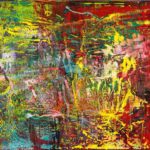Grégori de Souza, Pontifícia Universidade Católica do Paraná (PUC-PR) under a cotutelle agreement with the University of Coimbra, Coimbra, Portugal
Jelson R. de Oliveira, Pontifícia Universidade Católica do Paraná (PUC-PR), Curitiba, PR, Brazil
In the article Between Vision and Image: Towards a (Phenomenological) Anthropology of Image in Hans Jonas, published in the journal Trans/Form/Ação (vol. 47, no. 6, 2024), Professor Dr. Jelson R. de Oliveira, internationally recognized for his research on the philosophy of Hans Jonas, examines the significance of the concept of image in the German philosopher’s work.
Oliveira begins by demonstrating that Hans Jonas is one of the thinkers who explored the phenomenology of the senses, with a particular focus on vision and the issue of image. Initially, from a philosophical-biological perspective, as Jonas emphasizes the importance of vision in animal life in his book The Phenomenon of Life (1966). Subsequently, from an onto-anthropological perspective, where the image is understood as a stage of human freedom. The text illustrates how Hans Jonas expands these themes in his other writings, treating the image as a central element in philosophical ontology and anthropology, as well as its relevance in ethical reflections on the modern era, highlighting the ethical challenges posed by biotechnological powers that lack guidance and threaten human essence, in line with his incisive diagnosis of contemporary nihilism.
Starting from the conception that a theory of the image must first be understood within the context of a general ontology of life, which encompasses a philosophical anthropology, Jonas argues that the philosophy of life is simultaneously a philosophy of the organism and a philosophy of the spirit. In these terms, he opposes dualism and the two post-dualist movements of modernity—materialism and idealism—which he believes have failed to grasp life in its entirety.

Image: Pixabay.
Consequently, for Jonas, modern science, by focusing exclusively on the physical dimension of life, neglects the importance of spiritual interiority, which is crucial for understanding the body-spirit duality. Therefore, in his philosophical biology, the author argues that freedom is the guiding thread permeating the entire evolution of life, from the simplest to the most complex organisms, beginning with metabolism, progressing through sensation, perception, motility, and ultimately reaching rationality in human beings.
Vision is highlighted in this evolutionary narrative as the privileged sense that mediates between the organism and the world, allowing humans to create images and abstractions that expand their freedom and consciousness. In these terms, vision and the capacity to imagine (to create images) are therefore central to the characterization of human existence, which distinguishes itself from other forms of life by its ability to abstract and distance itself from the immediate world, thereby creating symbolic representations.
Professor Oliveira’s article demonstrates how Hans Jonas understands imagination and symbolic capacity as fundamental characteristics of human distancing from the animal world. According to Jonas, this distancing allows humans not only to develop language but also to conceive ideas that bridge the gap between immediate experience and the absence of the object, thus creating a “symbolic experience.” Jonas argues that this ability to create mediation between the self and the world enables a new form of relationship with truth and metaphysical thought. Simultaneously, this distancing unfolds into a second movement, in which humans distance themselves from themselves, creating a “self-image.”
This process of self-objectification allows individuals to reflect on their own existence, creating a new dimension of self-reflection. According to Jonas, the formation of this “self-image” is a fundamental achievement of humanity, mediated by language and social interaction. Furthermore, Jonas suggests that while this self-reflection facilitates the development of identity, it also opens the door to feelings of despair and alienation, culminating in the possibility of suicide as the ultimate form of distancing from oneself. For Jonas, this complex process of distancing is essential to understanding human freedom and transcendence, emerging as central elements in philosophical anthropology.
Although he relies on Darwinian theory of descent, asserting that understanding human beings requires their inclusion in the animal kingdom, Hans Jonas also draws on Aristotelian ideas in his argumentation. He highlights human uniqueness by pointing to our capacity for language and the ability to distinguish between good and evil—concepts that endow humans with a form of differentiation (transcendence) compared to other animals. Contrary to Darwin’s proposal, Hans Jonas aims to demonstrate how animality serves as an anchor for human transanimality, illustrating how the production of images is a unique characteristic of humanity. This reflects our ability to distance ourselves from the immediate and engage with reality through representation and imagination, thereby establishing a new mode of relationship with the world and with our own existence. This mode can be characterized as distinctly human.
Professor Oliveira’s article establishes a significant and clear connection between the intricate and complex themes within Jonas’s work. The article ultimately demonstrates how, in Hans Jonas’s work, biology is linked to ontology, and ontology to anthropology, revealing, from this interconnection, profound ethical implications. Among these implications is the technological progress race—particularly through biotechnology and transhumanism—which seeks to “reform” humanity while simultaneously denying its “image” and disregarding the meaning of what is intended to be addressed through such immense powers.
To read the article, access
OLIVEIRA, J.R. Entre a visão e a imagem: para uma antropologia (fenomenológica) da imagem em Hans Jonas. Trans/Form/Ação [online]. 2024, vol. 47, no. 6, e02400291 [viewed 12 December 2024]. https://doi.org/10.1590/0101-3173.2024.v47.n6.e02400291. Available from: https://www.scielo.br/j/trans/a/3WWRFp9VRJ3SwnCs3LYRQdn
References
JONAS, H. Philosophical Essays. From ancient creed to technological man. New York: Atropos Press, 2010.
JONAS, H. The phenomenon of Life. Toward a Philosophical Biology. Illinois: Northwestern University, 2001.
JONAS, H. Organismus und Freiheit: Ansätze zu einer philosophischen Biologie. Göt-tingen: Vandenhoeck & Ruprecht, 1973.
OLIVEIRA, J.R. Por que uma ética do futuro precisa de uma fundamentação ontológica segundo Hans Jonas. Revista de Filosofia Aurora [online]. 2012, vol. 24, no. 35, pp. 387-416 [viewed 12 December 2024]. https://doi.org/10.7213/revistadefilosofiaaurora.7510. Available from: https://periodicos.pucpr.br/aurora/article/view/433
External Links
Trans/Form/Ação – Journal: Instagram | Facebook | Academia.edu
Desafios filosóficos do pensamento de Wittgenstein
About Grégori de Souza
PhD Student in Philosophy at the Pontifical Catholic University of Paraná under a cotutelle agreement with the University of Coimbra, Portugal. Professor at PUCPR Online; Research Fellow at PRAXIS – Center of Philosophy, Politics and Culture at the University of Beira Interior; Visiting Researcher in the Department of Philosophy at the University of Valladolid (Spain).
About Jelson R. de Oliveira
He holds a Ph.D. in Philosophy and is a professor in the Graduate Program in Philosophy at the Pontifical Catholic University of Paraná (PUCPR). A specialist in the works of Nietzsche and Hans Jonas, he is the coordinator of the Hans Jonas Working Group at ANPOF, as well as the director of the Hans Jonas Center Brazil and the Hans Jonas Chair at PUCPR.
Como citar este post [ISO 690/2010]:















Recent Comments